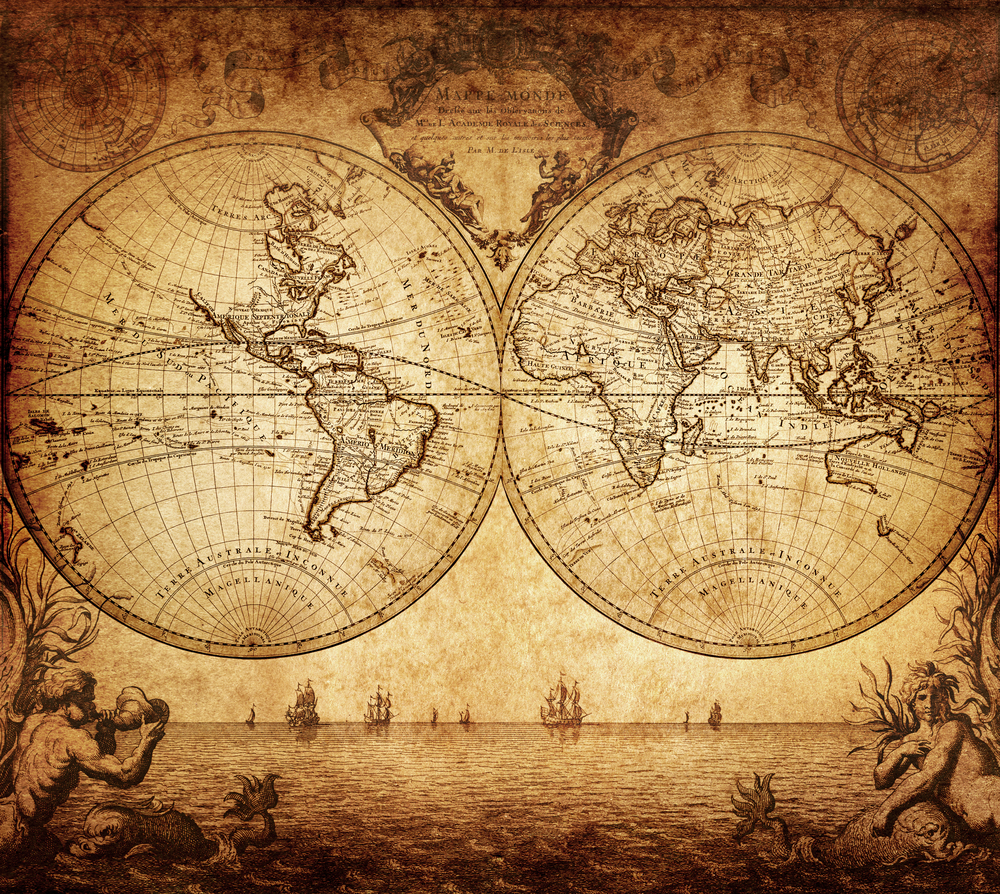What Are the Seven Seas?

The phrase "sail the Seven Seas" has had different meanings to different people at different times in history. The term "Seven Seas" is mentioned by ancient Hindus, Chinese, Persians, Romans and other cultures. The term historically referred to bodies of water along trade routes and regional waters; although in some cases the seas are mythical and not actual bodies of water.
The term "Seven Seas" has evolved to become a figurative term to describe a sailor who has navigated all the seas and oceans of the world, and not literally seven.
Why 'seven'?
The number seven has a great deal of historical, cultural and religious significance: lucky number seven, seven hills of Rome, seven days of the week, seven wonders of the world, seven dwarves, seven days of creation, seven Chakras, seven ages of man, seven deadly sins and seven virtues — just to name a few.
The term "Seven Seas" can be traced to ancient Sumer in 2300 B.C., where it was used in a hymn by Sumerian high priestess Enheduanna to Inanna, the goddess of sexual love, fertility and warfare.
To the Persians, the Seven Seas were the streams forming the Oxus River, the ancient name for the Amu Darya, one of the longest rivers in Central Asia. It rises in thePamir Mountains and flows northwest through the Hindu Kush and across Turkmenistan and Uzbekistan to the Aral Sea.
To the ancient Romans, the septem maria, Latin for Seven Seas, referred to a group of salt-water lagoons separated from the open sea by sandbanks near Venice. This was documented by Pliny the Elder, a Roman author and fleet commander.
The ancient Arabs defined the Seven Seas as the ones they sailed on voyages along their trading routes with the East. They were the Persian Gulf, the Gulf of Khambhat, the Bay of Bengal, the Strait of Malacca, the Singapore Strait, the Gulf of Thailand and the South China Sea.
The Phoenicians were expert sea traders and their sailors set out to in search of markets and raw materials. Their Seven Seas — Alboran, Balearic, Ligurian, Tyrrhenian, Ionian, Adriatic and Aegean — were all part of the Mediterranean.
The Greeks and Romans gave rise to the medieval definition of the Seven Seas. During this time, references to the Seven Seas meant the Adriatic Sea; the Mediterranean Sea (including the Aegean Sea); the Black Sea; the Caspian Sea; the Persian Gulf; the Arabian Sea (which is part of the Indian Ocean); and the Red Sea, including the Dead Sea and the Sea of Galilee.
During the Age of Discovery (1450-1650), after Europeans began exploring North America, the definition of the Seven Seas changed again. Mariners then referred to the Seven Seas as the Arctic Ocean, the Atlantic Ocean, the Indian Ocean, the Pacific Ocean, the Mediterranean Sea, the Caribbean Sea, and the Gulf of Mexico.Other geographers identify the Seven Seas at that time as the Mediterranean and Red seas, Indian Ocean, Persian Gulf, China Sea, and the West and East African seas.
The Colonial era, which saw the tea trade sailing from China to England, gave rise to another description of the Seven Seas: the Banda Sea, the Celebes Sea, the Flores Sea, the Java Sea, the South China Sea, the Sulu Sea and the Timor Sea. Their expression "sailed the Seven Seas" meant sailing to the other side of the world and back.
Modern Seven Seas
The modern list of the Seven Seas that is most widely accepted by geographers actually lists the oceans:
North Atlantic Ocean: the portion of the Atlantic Ocean that lies primarily between North America and the northeast coast of South America to the east, and Europe and the northwest coast of Africa to the west.
South Atlantic Ocean: the southern section of the Atlantic Ocean, extending southward from the equator to Antarctica.
North Pacific Ocean: the northern part of the Pacific Ocean, extending from the equator to the Arctic Ocean.
South Pacific Ocean: the lower segment of the Pacific Ocean, reaching southward from the equator to Antarctica.
Arctic Ocean: the smallest of the Seven Seas, it surrounds the North Pole.
Southern Ocean: also known as the Antarctic Ocean, it consists of the southern portions of the Pacific, Atlantic, and Indian oceans and their tributary seas. It is the newest ocean, being designated by the International Hydrographic Organizationin 2000.
Indian Ocean: stretches for more than 6,200 miles (10,000 km) between the southern tips of Africa and Australia.
— Kim Ann Zimmermann, LiveScience Contributor
Sign up for the Live Science daily newsletter now
Get the world’s most fascinating discoveries delivered straight to your inbox.
Kim Ann Zimmermann is a contributor to Live Science and sister site Space.com, writing mainly evergreen reference articles that provide background on myriad scientific topics, from astronauts to climate, and from culture to medicine. Her work can also be found in Business News Daily and KM World. She holds a bachelor’s degree in communications from Glassboro State College (now known as Rowan University) in New Jersey.










